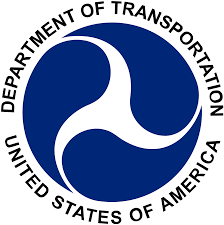Department of Transportation
DOT Drug and Alcohol Testing
DOT drug testing refers to a drug testing program mandated by the U.S. Department of Transportation (DOT). It is a requirement for employees who perform safety-sensitive duties in industries regulated by the DOT, such as aviation, trucking, railroads, public transit, pipelines, and maritime operations. The testing ensures that individuals in these roles are not impaired by drugs or alcohol, which could jeopardize public safety.
Key Features of DOT Drug Testing:
- Regulated by Federal Law: DOT drug testing follows strict guidelines outlined in 49 CFR Part 40 of the Code of Federal Regulations.
- Who Must Comply: Employees in safety-sensitive positions (e.g., pilots, truck drivers, train operators, ship captains) are subject to this testing.
- Types of Substances Tested: The test typically screens for:
- Marijuana (THC)
- Phencyclidine (PCP)
- Amphetamines
- Opiates (heroin, hydrocodone, hydromorphone, oxycodone, and oxymorphone)
- Cocaine
- Testing Circumstances: DOT drug testing occurs in situations such as:
- Pre-employment
- Random testing
- Post-accident testing
- Reasonable suspicion testing
- Return-to-duty and follow-up testing (after a policy violation)
- Testing Methodology:
- Urine and Oral Fluid
- The testing process includes a strict chain of custody to ensure accuracy and fairness.
- A Medical Review Officer (MRO) reviews and confirms positive results.
Why DOT Drug Testing is Necessary:
- Public Safety: Ensures that individuals operating vehicles or machinery are sober and alert.
- Compliance: Employers in regulated industries must adhere to DOT rules to maintain operating authority.
- Prevention: Acts as a deterrent against drug and alcohol use in safety-sensitive environments.
- Accident Reduction: Minimizes the risk of accidents caused by impaired judgment or reaction time.
By enforcing drug-free workplaces in high-stakes industries, DOT drug testing helps protect both employees and the public.

